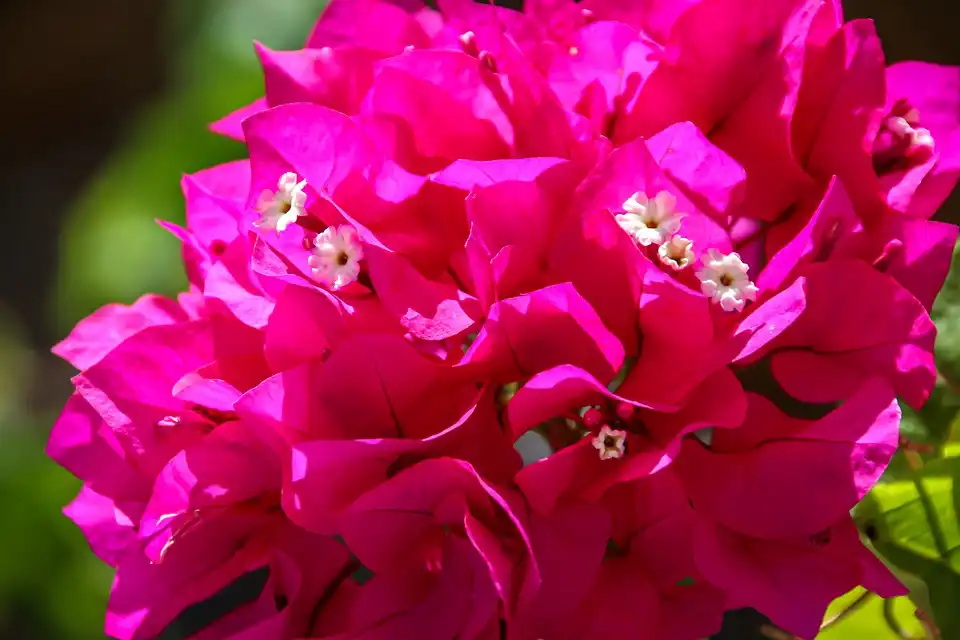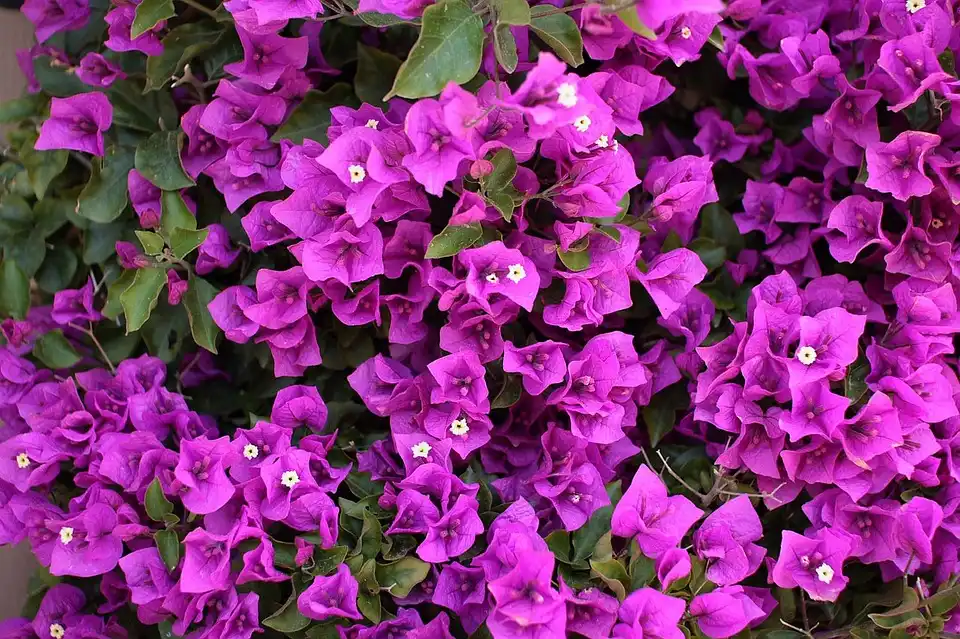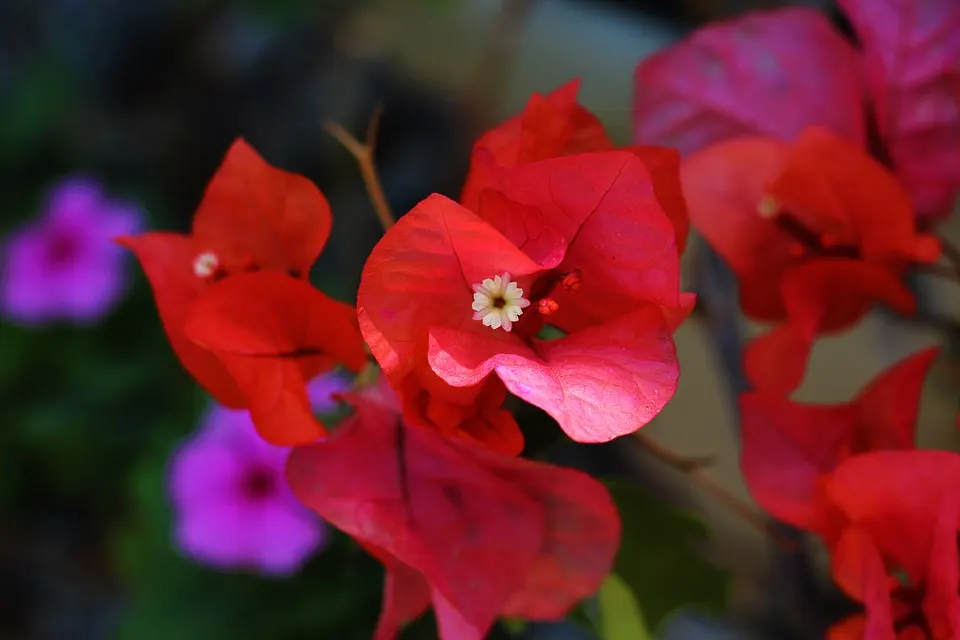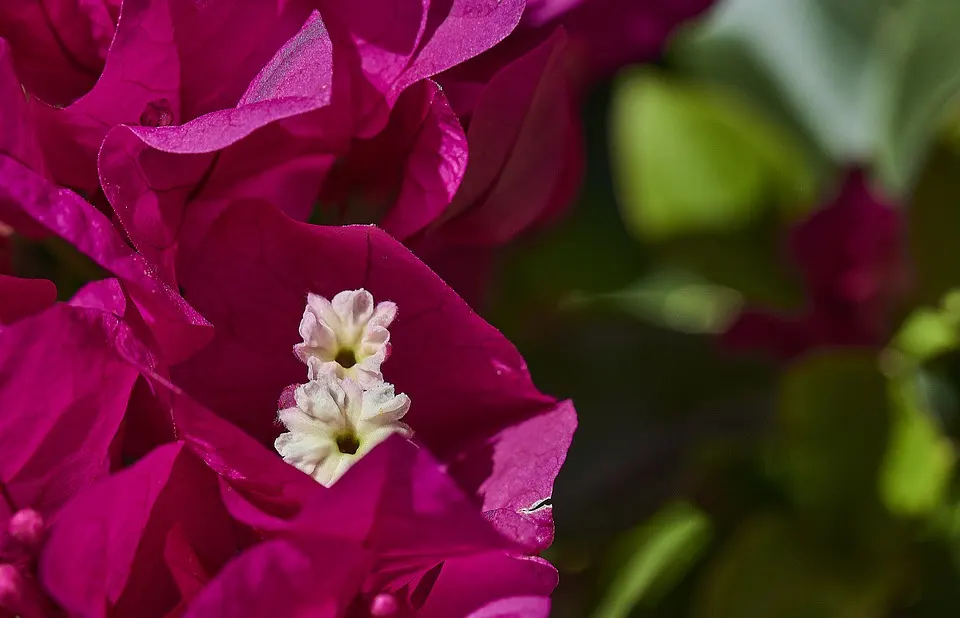What Bug is Eating my Bougainvillea?
One of the most appealing factors about bougainvilleas is that they are rarely affected by bugs and diseases. Rare does not mean it’s completely impossible, though, and unfortunately, there are a few little creatures that do enjoy snacking on these beautiful shrubs and trees.
Below, we’ll cover a few of the more common critters that thrive on lush vegetation and vibrant bracts of bougainvillea plants and also address how you can root these bugs out.
Bougainvillea Looper Catepillars
This insect is so fond of bougainvillea; it even bears the plant’s name. While bougainvillea loopers are not deadly to your plant, it’s far from ideal to see a once thriving, lush, and colorful bonsai succumb to their unsightly damage.
The Appearance of the Bougainvillea Looper Caterpillar
Bougainvillea loopers are small, worm-like caterpillars that are commonly known as “inchworms.” They will bunch up their bodies and then extend back out as if measuring their surroundings. These caterpillars are commonly yellow, brown, or green in color, and as the name suggests, are most commonly found on bougainvilleas.
However, their snacking habits are known to extend to other members of the plant family bougainvillea is part of. As they are caterpillars and not worms, they are the larva form of another insect; the small, brown somber carpet moth.
The Evidence of the Bougainvillea Looper Caterpillar
Being nocturnal beasts of the undergrowth, bougainvillea loopers feast mainly under cover of darkness. During the day, their curious colors let them blend rather well into the foliage of the bougainvillea bonsai itself. Therefore, you won’t notice the caterpillars immediately; however, you will see the evidence of their presence as clear as day.
In interior design and even landscaping, a scalloped edge is a feature capable of creating immense visual interest in otherwise bland areas or flower beds. Scalloped edges on your bougainvilleas’ leaves, however, are a far less appealing visual display. These are the shapes bougainvillea loopers are fondest of leaving on the leaves they feast on and indicate a looper infestation.
This is only the scalloped-edged tip of the bougainvillea looper iceberg. The more loopers your bonsais are plagued by, the worse the damage will be. In the most severe cases for a mature bougainvillea shrub, a heavy presence of loopers may result in ravaging tender shoots and even the total defoliation of affected vines. Mature bougainvilleas tend to bounce back to their former vibrance and enchanting beauty if the looper infestation is eradicated.
How to Control Bougainvillea Looper Caterpillars
A possible reason why loopers prefer to snack at night is that they are a favorite snack of many carnivorous animals. Natural predators like spiders, certain beetles, and ants are likely to decimate looper caterpillars, eggs, and larvae. Lady beetles consume looper caterpillars at the highest rate, polishing off 50% of the caterpillar’s eggs and 25% of their larvae within three days. Short of importing vast new ecosystems of beetles, ants, and spiders, how do you realistically get control of the looper population?
There are many chemical options claiming to root out bougainvillea looper caterpillars, but most of these also cause significant harm to populations of insects that control loopers. Therefore, it’s best to stick to neem-based biological insecticides. Insect oils and soaps are futile against loopers.
The best time to spray insecticides for looper caterpillars is in the waning evening hours. This is both when the loopers are most active and when there’s less chance of other beneficial insects being up and about.
Leaf Miners
Leaf miner is the generic term given to a particularly shrewd group of insects. Instead of wandering around, barely visible underneath bougainvillea leaves, these crafty critters eat their way around the inside of the leaves. This means they stay perfectly well protected and out of reach of spray nozzles, powders, and soaps.
The Appearance of Leaf Miners
Most leaf miners are in the Lepidoptera and Diptera classifications of insectoid organisms. This is to say they are flies and moths, more particularly, their larvae. Certain beetles have similar habits in their larval stages, but flies and moths are the biggest culprits.
The Evidence of Leaf Miners
Leaf miners do exactly what their name suggests; they mine through the foliage of your bougainvillea bonsai. The result of these primitive mining operations are tunnels visible from the leaf’s surface due to the thinning of interior plant fiber. Leaf miners are very easy to spot as these tunnels leave all sorts of patterns on your leaves. I love patterns and detail as much as the next guy, but not at the cost of my bougainvillea’s foliage. These tunnels are detrimental to the well-being of your plant. Affected leaves will eventually become the skeletal remains of a once vibrant bush, and the infestation could very well kill your bougainvillea completely.
How to Control Leaf Miners
Leaf miners are similar to wood-boring insects in that they are quite difficult to control. Because they’re on the inside of the leaves, you can’t kill them with insecticides and sprays. They quite literally use the decaying shroud of the bougainvillea bonsai’s leaves to protect themselves from anything humanity can spray at them.
Your best bet would be cleaning around the affected plant. Because their eggs are not laid on the plant itself, any debris around the plant is likely a leaf miner nest. Getting rid of the eggs and larvae still rummaging around the debris, looking for a way up to the plant, is the best way to limit the spread and intensity of the infestation.
Systemic pesticides that are specially formulated to move within the leaves work as well. However, many types of leaf miners have developed immunities to systemic options.
Scale Insects
These are a class of attacker encased in a protective waxy coating. Easy to identify but difficult to eradicate, scale insects vary greatly in their appearance.
The Appearance of Scale Insects
Scale insects are parasitic, feeding off of sap extracted directly from the vascular system of your bougainvillea bonsai. You can think of them as the vampires of the insect kingdom. There are many different types of scale insects, from tiny organisms with green or white wax shells to deathly beautiful pearlescent orbs that collect on stems, shoots, and leaves.
The waxy, sometimes scale-like coverings these insects possess make them harder to root out with pesticides than other creatures. Pesticides will only be effective against the juvenile crawlers of this type of infestation.
The Evidence of Scale Insects
If you’ve ever seen one of your bougainvilleas covered in a dark moldy substance, you most likely witnessed the work of scale insects. As they absorb all the nutrients from your plant, its leaves will wilt and turn black, and its stalks will be covered in a sooty mold.
How to Control Scale Insects
The first step against scale insects is moving the affected plant. Unfortunately, once they grab hold of a supple stalk, scale insects tend to spread like wildfire. Separate the affected plant and gently scrape the stalks clean with a twig or any suitable scraping tool. Next, you need to wash the infected plant with a soap or oil mixture if scraping doesn’t work well enough. Horticultural oil works wonders in this instance.
If scraping and soap are ineffective, you can buy and release a natural predator on the scaly critters. Chilocorus nigritus or Lindorus lophanthae are brilliant for more serious scale insect infestations. These predators feed exclusively off other insects, and once the scale insects have been neutralized, the predators will die from lack of nutrients.
Spider Mites
Any insect with the word sider in is already a little more intimidating than the rest. To your bougainvilleas, these tiny creatures could mean disaster.
The appearance of Spider Mites
Spider mites look like little black dots. You’ll typically see these collected on stalks and the underside of leaves. These creatures really are small, so small you may even need a magnifying glass to identify them. Identifying that they are indeed present on your bougainvillea is critical, as treatment may be harmful to the plant if there are no mites to target.
The Evidence of Spider Mites
As the name suggests, spider mites spin webs on infested leaves. This is a relatively quick way to identify them. You should also look for light spots on the leaves of your bougainvilleas. A small number of spider mites shouldn’t concern you, but if there are signs like leaf discoloration, there are already enough mites to effectively bleed your bougainvillea of its vital nutrients.
How to Control Spider Mites
Oddly enough, most of the time, once you’ve noticed the damage, the spider mites will be gone. Bougainvilleas recover well once the mites have left, and no significant long-term damage should have occurred.
Sometimes, however, the mites are still present on the underside of the leaves and clinging to the stalks. This is when it’s time to bring out the spray guns. Petroleum-based horticultural oils and neem oils should do the trick. Horticultural soaps should work well too. Proper contact with the mites is essential for oils and soaps, so lather up affected leaves and stalks well for best results.
Spraying your plants with water regularly is a good way to keep control of spider mite populations and may prevent more serious infestations.
Final Word
None of us like finding our bougainvilleas drooping or wilting or looking like skeletal plants. Now at least, you know how to identify, capture and kill a few of the most common threats to the beautiful floral shrub. Even though it’s not commonplace for bougainvilleas to succumb to parasitic insect infestations, keep an eye on your blooms and foliage so that you can act quickly at first sight of infection.







